Fujian Tulou is a collection of earthen houses, impenetrable by outsiders, built between the 12th and the 20th centuries, located in the mountainous areas in southeastern Fujian, China. A tulou is usually large, several storeys high, and built along an inward-looking, circular or square floor plan. The doughnut shaped house has a central open courtyard and can house up to 800 people or 80 families each. The outside wall is a solid block served by only one entrance, and windows to the outside are located only above the first floor. Tulous were built for defense against armed bandits that plagued southern China from the 12th century to 19th century. The people of southern Fujian first built strongholds on top of mountains as a defense. These early strongholds later evolved into Fujian Tulou.
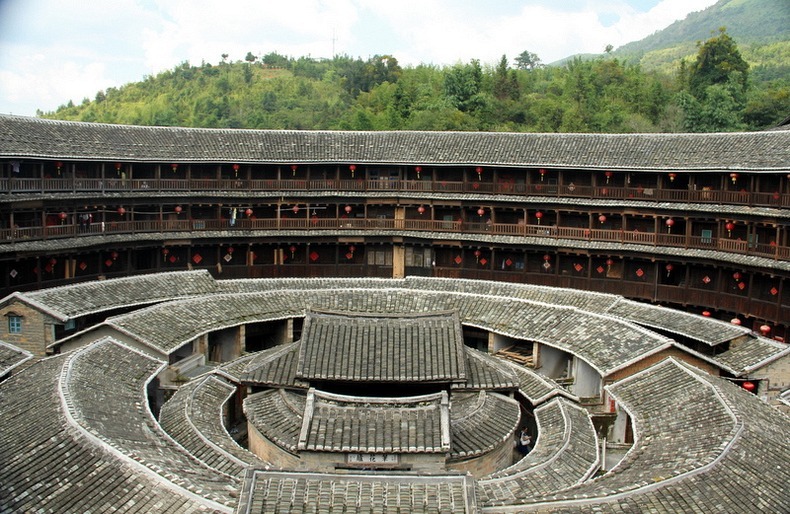
The fortified outer structures are formed by compacting earth, mixed with stone, granite, bamboo, wood and other readily available materials, to form walls up to 6 feet thick. Branches, strips of wood and bamboo chips are often laid in the wall as additional reinforcement. The entrance is guarded by 4-5 inch thick wooden doors reinforced with an outer shell of iron plate. The top level of these earth building have gun holes.
The tulous are as solid as a castle and offered specular resistance against cannon fire. In 1934, a group of uprising peasants of Yongding County occupied a tulou to resist the assault of the army, which fired 19 cannon shots at that tulou, but made only a small dent on the outside wall.
Housing a whole clan, the whole structure functioned as small village and were known as “a little kingdom for the family” or “bustling small city.” The buildings were divided vertically between families with each disposing of two or three rooms on each floor. In contrast with their plain exterior, the inside of the tulou were built for comfort that is warm in winter and cool in summer, and were often highly decorated. The rooms are well-lit, well-ventilated, windproof, and the entire building earthquake-proof.
There are more than 20,000 tulous in Fujian, scattered in the mountainous southeastern region of Fujian province. Although tulous are found in other parts of China, they are all referred to as Fujian Tulou after UNESCO adopted that name for all dwellings of this type. A total of 46 Fujian Tulou sites have been inscribed in 2008 by UNESCO as World Heritage Site, as "exceptional examples of a building tradition and function exemplifying a particular type of communal living and defensive organization in a harmonious relationship with their environment".
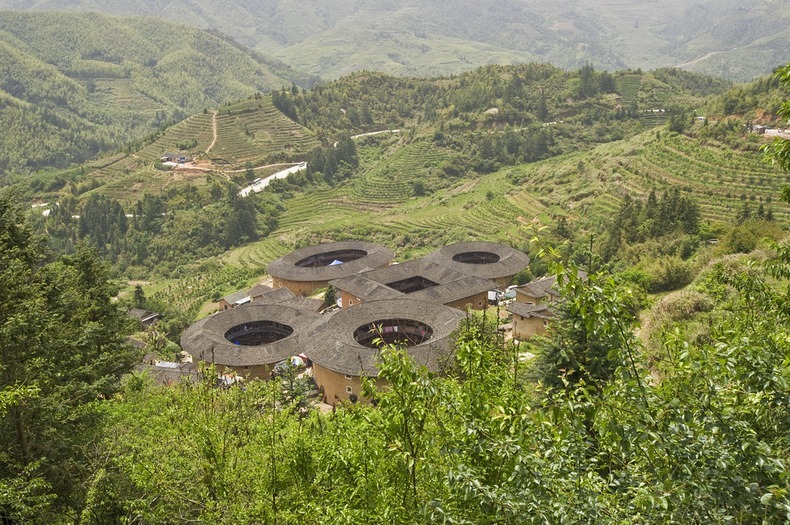
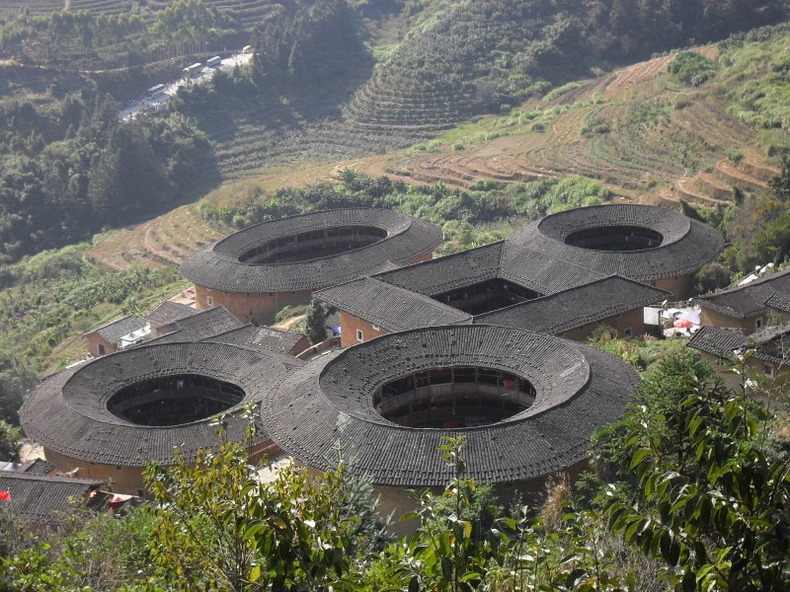
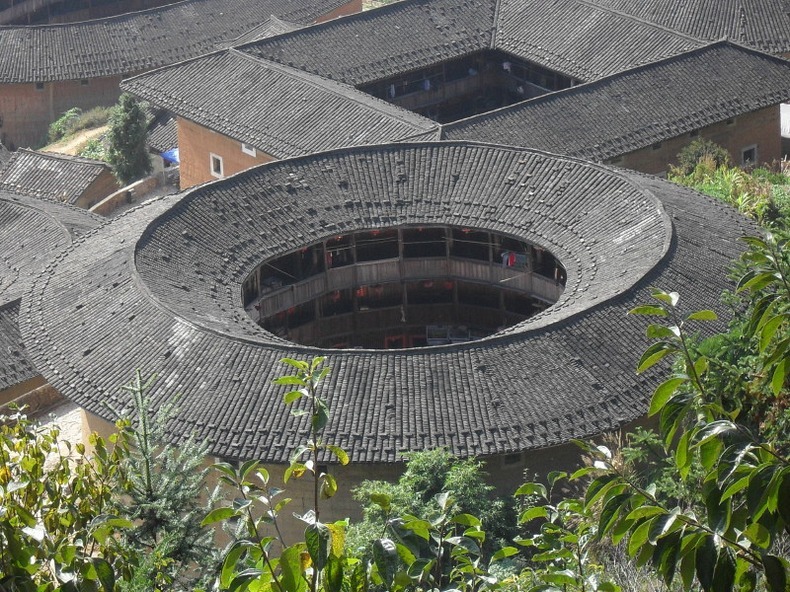

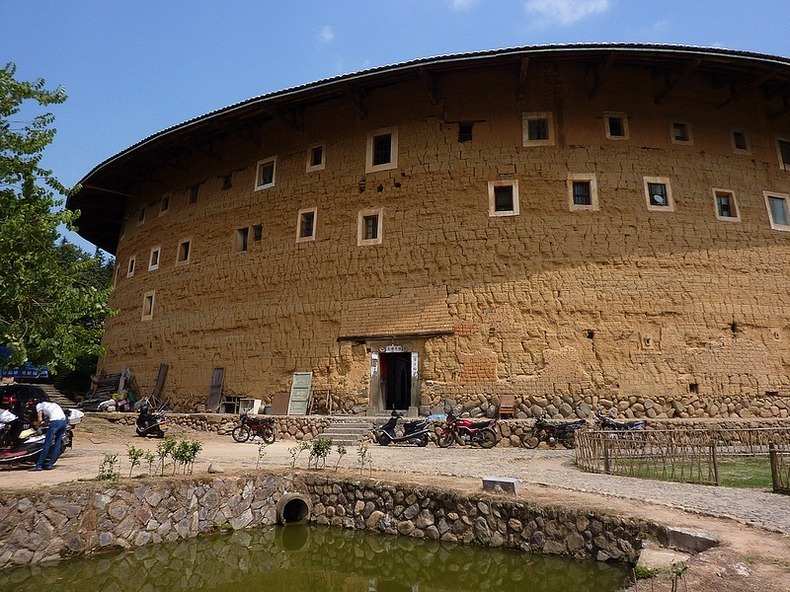
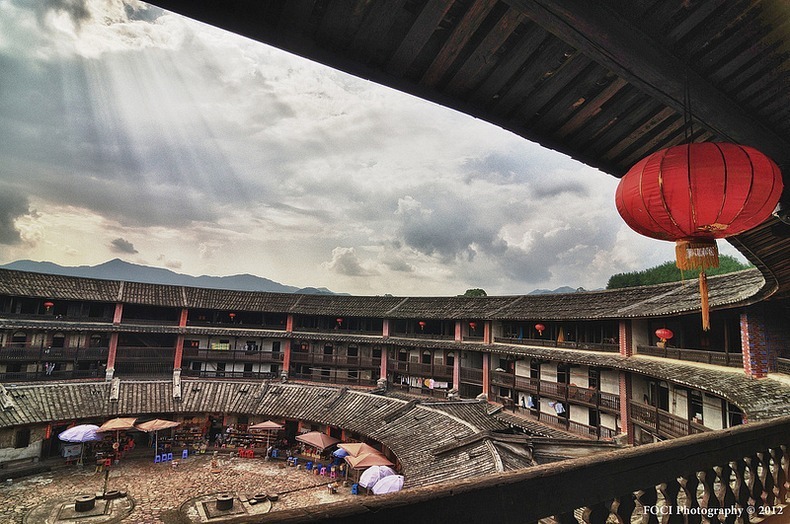

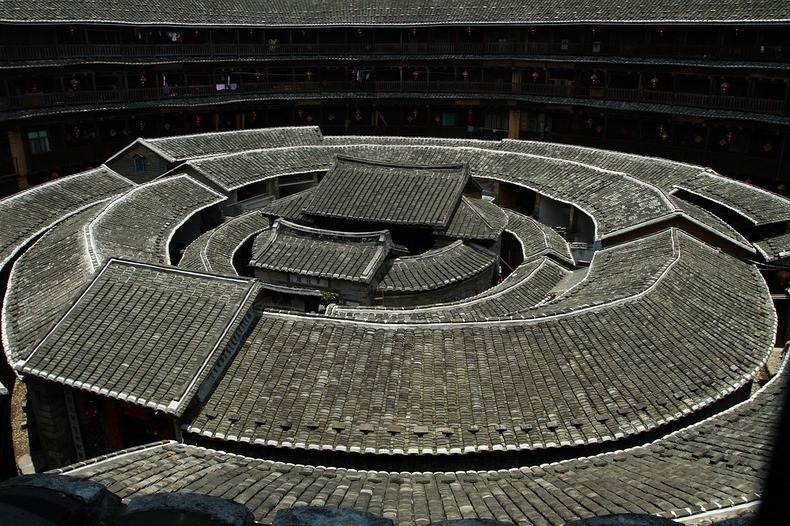
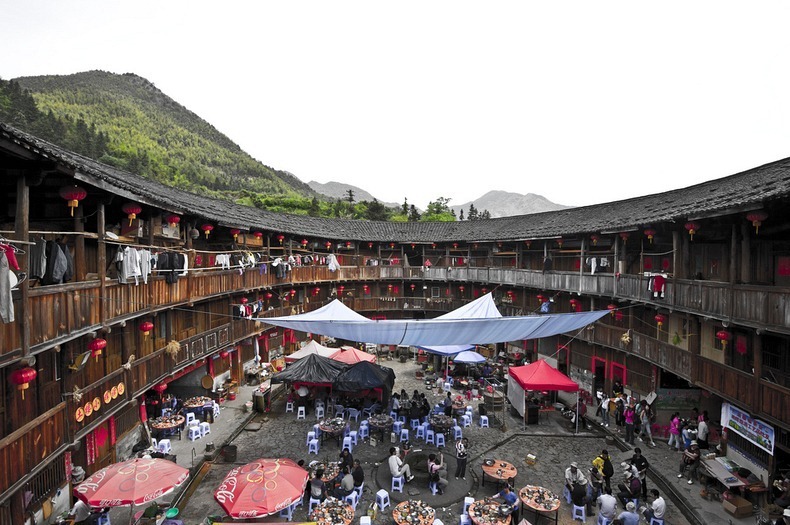
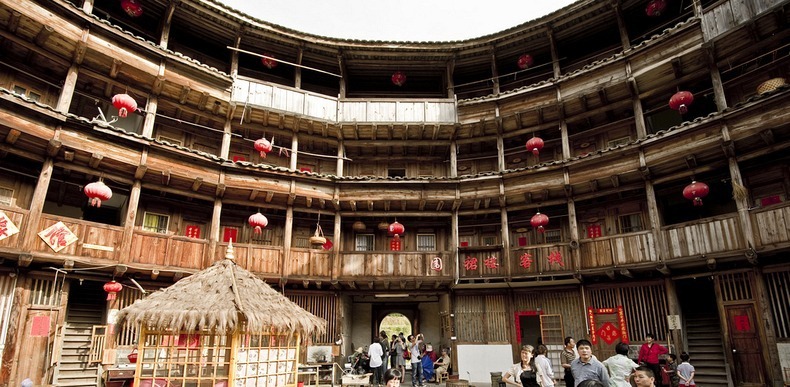

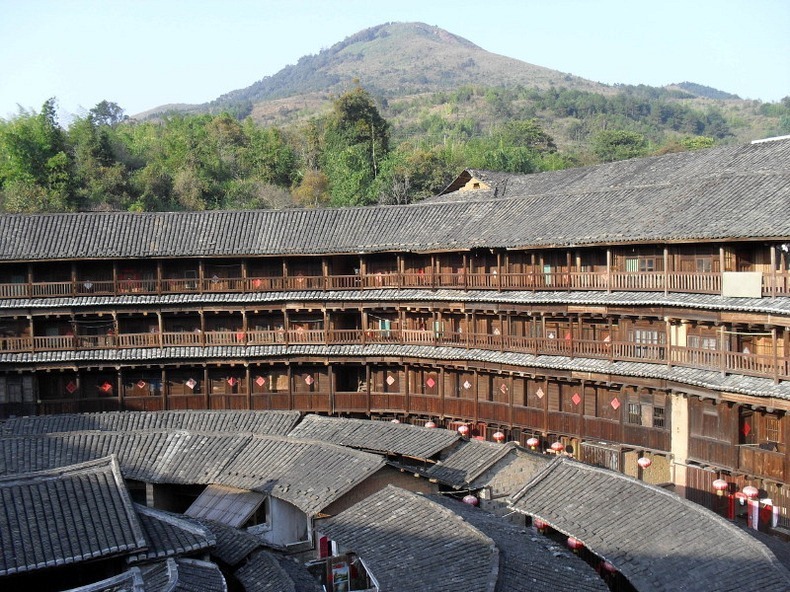
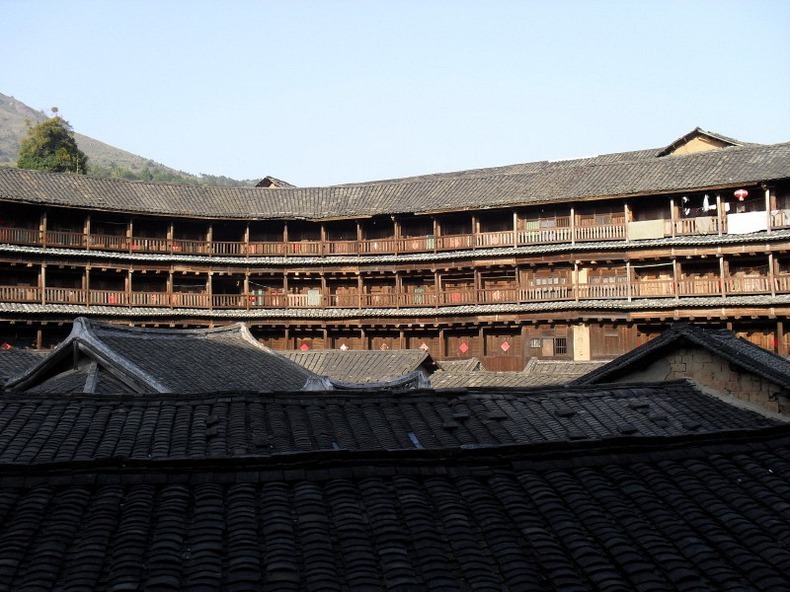
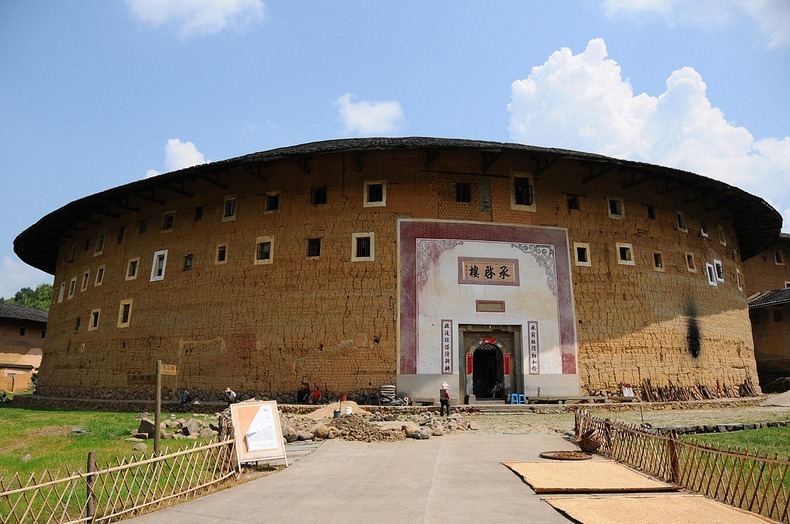



Tianluokeng has the most famous cluster of 4 circular tulou's with a square one in the middle. These Hakka clan houses with their rammed-earth walls and wooden beams and posts; each building has at least two stories high and is closed out from the surrounding area mostly for defense function. In the boundless mountain terrain stand these unique buildings from 769 during the Tang dynasty and quite a few were built during the Song and Yuan dynasties.
ReplyDeleteWe paid ticket to access the village. Usually one main door leads you to the open area in the center of an earthen tower. The first floor is kitchen (or for business use now); upstairs storage is residential area. Many families had their chats and gossips or tea drinking sessions in courtyard.
Although there are tourists around, the villagers’ life keep alive and interesting. We explore the village in and out, and greeted by some locals. Food is also interesting, mainly based on poultry, pork, rabbit, and local veggies, including tea leaves. And we highly recommend you explore the nearby Tulous or if time permit, a overnight stay would be great!
more info and photos of Tulou at accesschinatravel.com